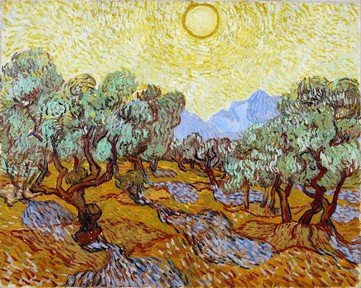Quiz Answer Key and Fun Facts
1. We begin with one of the most recognizable images in the history of art. Painted between 1508 and 1512, "The Creation of Adam" is the central panel in a series of nine scenes from the Book of Genesis. Who is the artist?
2. As we all know, it didn't take mankind long to screw things up and "The Fall of Man", a 1550 painting by a Venetian master, captures the moment things started to go wrong. Who is the artist?
3. The consequences for Adam and Eve are depicted in "The Expulsion from the Garden of Eden", painted in 1426-27. Who is the artist, one of the great (although short-lived) painters of the early 15th century?
4. Moving on to the Book of Exodus and a story that numerous artists have depicted, including this 1634 work entitled "The Crossing of the Red Sea". Who is this classical French Baroque artist particularly known for his iblical and mythological subjects?
5. Completed in 1501, "The Test of Fire of Moses" is one of a pair of pendant paintings of Biblical stories with similar themes. Who is the artist, one of the co-founders of the Venetian school of Italian Renaissance painting?
6. We have seen other examples of work by this most versatile of artists in other rooms of our virtual gallery. This 1659 painting "Moses Breaking the Tablets of the Law" is not atypical of work by one of the greatest painters of all time. Who is the artist?
7. Painted in 1818, "Elijah in the Desert" shows the prophet prior to his ascension to Heaven in a whirlwind. The artist was a pioneer in America's Romantic movement who was perhaps best known as a landscape painter. Who is the artist?
8. Numerous painters have depicted Samson in their works, both with and without Delilah. "Samson Battling with the Lion" is a 1525 panel by a German Renaissance painter probably best known for his portrait from his time as court painter to the Electors of Saxony. Who is the artist?
9. Solomon is another Biblical figure much loved by artists: our featured work from 1617 is "The Judgment of Solomon". This highly versatile Flemish Baroque artist is known for his portraits, landscapes and historical paintings of Biblical and mythological figures. Who is the artist?
10. Our final exhibit in this room is "David with the Head of Goliath", completed in 1610. It is one of two paintings on the subject by an artist who was a prolific painter of religious scenes and figures. Which Italian master is the artist?
Source: Author
EnglishJedi
This quiz was reviewed by FunTrivia editor
looney_tunes before going online.
Any errors found in FunTrivia content are routinely corrected through our feedback system.

